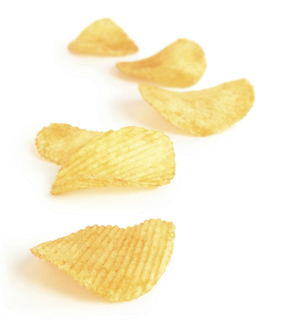Dr. Watson Says: |
 |
| ...One of the interesting stories he told was how they did quality control on their potato chips... |
|
What Do You Say?
|
|
|
|
I always like learning about new applications of machine learning algorithms to improve operations. And, I especially like ones that are easy to explain.
I ran across one such application in a podcast interview of Frito-Lay’s Brendan O’Donohoe where he was discussing the potato chip supply chain. One of the interesting stories he told was how they did quality control on their potato chips.
 After the chips are produced, they are sent down a 60 mph conveyor belt to be packaged in bags for consumers. This conveyor belt is the last chance to make sure that all the chips live up the Frito-Lay’s quality and size standards. After the chips are produced, they are sent down a 60 mph conveyor belt to be packaged in bags for consumers. This conveyor belt is the last chance to make sure that all the chips live up the Frito-Lay’s quality and size standards.
Soon after falling on the belt, a high speed camera takes a picture of each chip. Other technology then tracks that exact chip all the way down the line.
Later on the conveyer belt, there is a gap in the line. The gap is large enough for a chip to fall through. But, because the chips are moving at 60 mph, the laws of physics ensure that the chips safely fly over the gap.
Previous Columns by
Dr. Watson |
|
|
Now, here is the cool part. Just above the gap is a series of air nozzles. When a bad chip is just over the gap, the air nozzle fires a puff of air to send that chip down the gap into the waste bin.
Although O’Donohoe didn’t discuss how the chip was identified as bad, we can guess that it was from a machine learning algorithm.
Once the picture was taken of the chip, the image was likely turned into a big grid’s worth of data. Each square in the grid would have information on whether there was chip in that part of the grid (to help tell how big the chip was) and the color of the chip (to look for quality) or some other characteristics. Then, the image was compared to other chips of known quality or into a formula for quality. The algorithm would then determine whether the chip met Frito-Lay’s quality standards or was destined to get a puff of air just when it was over the gap.
All of this has to happen in the time from when the picture was taken to when the chip reaches the gap. And, it has to be done more presumably thousands of chips at a time.
Final Thoughts
Machine learning algorithms will continue to find industrial applications that help make products better or keep machines and equipment running. |
|